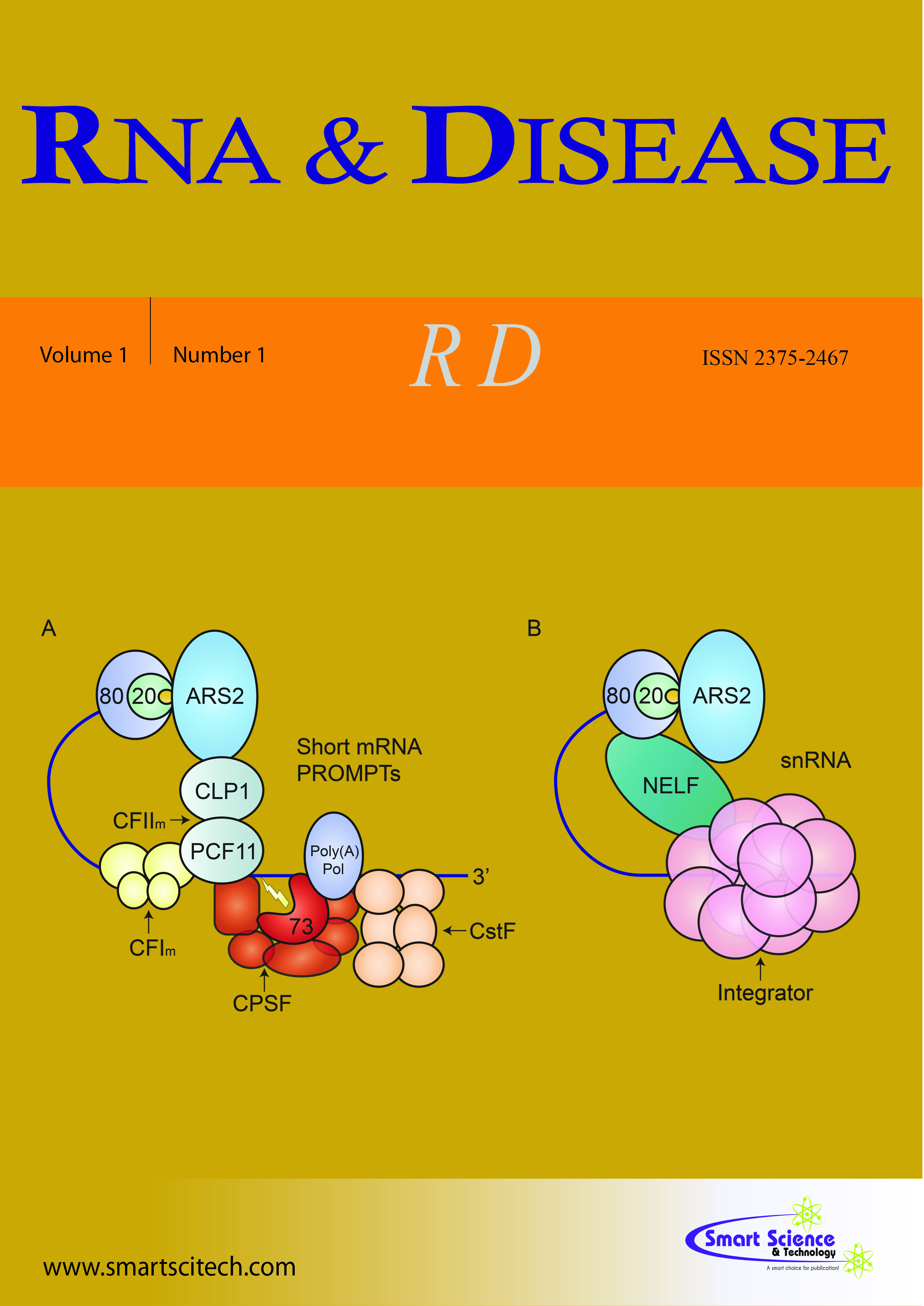Obesity-induced microRNAs and type 2 diabetes
DOI: 10.14800/rd.413
Abstract
Obesity is a growing health problem and causally linked to the pathogenesis of type 2 diabetes mellitus (T2DM). T2DM is a metabolic disorder caused by peripheral insulin resistance as well as suboptimal insulin production. Although endogenous non-coding small microRNAs (miRNAs) have been shown to play an important role in the post-transcriptional repression of target genes, the implication of obesity-induced miRNAs in metabolic disorders particularly in the development of insulin resistance is largely unknown. Recent studies have revealed that SFA palmitate and high fat diet (HFD) significantly increase the expression of certain miRNAs, such as miR-29a and miR-195, in myocytes and hepatocytes. These obesity-induced miRNAs are also up-regulated by saturated fatty acid (SFA) treatment in cultured myocytes and hepatocytes. miR-29a targets IRS-1 3’UTR directly and represses IRS-1 expression at the post-transcriptional level. The ectopic expression of miR-29a impairs insulin signaling and the insulin-stimulated glucose uptake in myocytes. miR-195 down-regulates the mRNA and protein expression of INSR without apparently changing IRS-1 expression in hepatocytes. The ectopic expression of miR-195 reduced significantly the insulin-stimulated phosphorylation of INSR and its downstream molecules in hepatocytes. Moreover, the ectopic expression of miR-195 reduced the insulin-stimulated synthesis of glycogen significantly. Taken together, these results clearly suggest that the induction of miR-29a and miR-195 by SFA are causally linked to the development of insulin resistance in obesity. These evidences provide novel insights into the molecular basis of insulin resistance, and implicate SFA-induced miRNAs in the development of T2DM and metabolic diseases.












